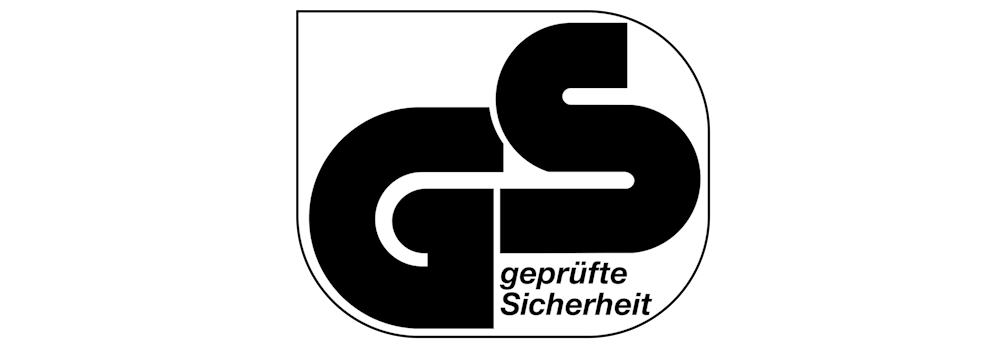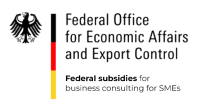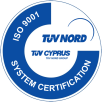Personal protective equipment
In the world of e-commerce, it is very important for you to know all the laws and regulations relating to the products that you want to sell. A field that deserves special attention is the Regulation on personal protective equipment, or PPE. It takes effect in particular if you want to sell products that could be classified as PPE. This is explained in detail in this blog post.
What is personal protective equipment?
What is PPE, anyway? Generally speaking, PPE means any equipment designed and manufactured for the purpose of being worn or held by a person for protection against risks to their health or safety. It includes gloves, helmets, goggles, safety footwear, and special protective clothing, among others. The PPE Regulation (EU) 2016/425 contains strict provisions regarding the requirements for the production and sale of such equipment within the EU.
Risk categories of PPE
The Regulation divides PPE into three risk categories, depending on the severity of the risk. Category I includes products designed for minimal risks, category II includes PPE for average risks, and category III includes PPE for risks that may cause very serious consequences such as irreversible damage to a person’s health or even death. In detail:
Category I
Category I includes PPE intended to protect users against minimal risks. This means products that protect you from
- superficial mechanical injury;
- contact with cleaning materials of weak action;
- contact with hot surfaces not exceeding 50°C;
- damage to the eyes due to exposure to sunlight (other than during observation of the sun); or
- atmospheric conditions that are not of an extreme nature.
With products in this category, the manufacturer is directly responsible for their distribution. Consequently, using a notified body is not mandatory for such products.

Category II
Category II basically includes any PPE that cannot be immediately classified as category I or category III equipment. It means that these products are intended to protect you against average risks. If a product is classified as category II, the notified body is required to do an EU type examination (module B) to certify that these products comply with the applicable requirements under the PPE Regulation. For the manufacturer, this means that they are responsible for ensuring that the manufacturing process and the monitoring of the conformity of the manufactured PPE with the type and the applicable requirements of the Regulation are being complied with.
Category III
Category III includes any PPE that is suitable to protect the user against serious consequences such as irreversible damage to their health and death. Consequently, this category includes products that protect you from
- ionizing radiation;
- extremely high or low temperatures;
- chemical risks;
- electric hazards; and
- drowning.
For this category, involving a notified body for the EU type examination (module B) and for the monitoring is mandatory. The manufacturer can choose between different monitoring modules, such as the internal production control plus supervised product checks (module C2) or quality assurance of the production process (module D).
In general, we find that the classification of PPE into the respective risk categories is highly significant for the manufacturer to enable them to ensure compliance with the legal provisions and the safety of the end users. This is why manufacturers have to perform a careful assessment of the risks against which their products are supposed to protect the users, and to choose the correct category and the related conformity assessment procedures.
Harmonized standards and labeling
Harmonized standards are a key element in the assessment of the conformity of products within the framework of the PPE Regulation. They ensure that the products truly comply with the—no doubt very high—requirements regarding performance and safety. These standards are technical specifications developed by highly renowned European standardization organizations such as CEN, CENELEC or ETSI for the purpose of compliance with the fundamental safety requirements pursuant to the PPE Regulation. Applying these standards enables manufacturers to prove that they are monitoring the compliance of their products with the provisions of the PPE Regulation. If the products comply with the fundamental requirements of the Regulation, compliance with these standards is not mandatory. There are specific standards for each of the different types of PPE. For example, the standard EN 149 concerns respiratory protective devices, while EN 166 refers to eye and face protection, and EN 374 covers protective gloves against dangerous chemicals.
The CE marking plays an important role in complying with the provisions of the PPE Regulation. It certifies that the product meets the fundamental requirements of the EU regulations. Depending on the product category, other labels may be required in addition to the CE marking. For example, this is the case with products that are certified according to EN 166, i.e., eye and face protection, which can be equipped with additional symbols for specific protective properties such as toughness or UV protection.
The GS mark, which stands for “geprüfte Sicherheit” (tested safety) and certifies that the product has been subjected to additional safety tests, is another relevant test label in Germany. It helps to give the consumers an additional foundation of trust. However, this mark is to be used only for personal protective equipment in categories I and II.

Technical documentation and EU type examination
The technical documentation and the EU type examination are very important within the framework of the PPE Regulation, in particular for products sold under private labels.
The documentation must not only comply with the provisions of the PPE Regulation, but it is also crucial in providing proof that the product complies with the health and safety requirements. The technical documentation comprises a comprehensive description of the PPE, including the intended use, as well as a risk assessment detailing the potential hazards that the product is meant to protect against. Furthermore, the documentation includes a list of the fundamental requirements regarding health and safety, same as they are defined in the PPE Regulation itself and applicable for the respective product.
Detailed design and production drawings of the PPE, including all of its components, modules and circuits, are another essential part of the documentation, complemented by necessary explanations to ensure that the operating principles of the PPE, the plans and drawings are easily understandable. Not least of all, information about harmonized standards and other technical specifications that have been applied, in part or in their entirety, is also included. Compliance with the applicable standards is confirmed by the results of tests and analyses that are also included in the documentation.
For products classified as category II or III in particular, the EU type examination is crucial. For this examination, a representative sample of the PPE is tested by an authorized body to ensure that the design of the product complies with the relevant requirements in regard to health and safety. If the product successfully passes the test, a certificate of the EU type examination is issued, which constitutes an important part of the technical documentation. If a product is explicitly classified as category III, it is important to make sure that the identification number of the notified body is indicated next to the CE marking on the product in order to show that the product has been subjected to a strict conformity assessment procedure and complies with the requirements of the PPE Regulation.
Ultimately, observing these procedures ensures that PPE that is marketed under a private label complies with the relevant safety standards and statutory provisions. This helps to not only avoid regulatory penalties, but also to enhance product safety and strengthen the trust of the end consumer.
The role of the notified bodies
The notified bodies are independent testing and certification organizations that are accredited by the national authorities of an EU member state and designated by the European Commission. They are responsible for assessing whether a product complies with the relevant EU regulations.
With respect to the PPE Regulation, this means—as mentioned above—that the notified bodies check whether the products, in particular those classified as category III, comply with the high safety and health requirements. The certificate of the EU type examination is issued by the notified body following the review of the product’s technical documentation.
GS certification and Declaration of Conformity
The GS certification mark, which stands for “geprüfte Sicherheit” (tested safety), is a voluntary quality seal. It can give manufacturers of category I and II PPE a competitive edge because the GS mark indicates higher safety standards that exceed the fundamental EU requirements. This mark is used only for category I and II PPE. For category III PPE, on the other hand, it is not admissible because such PPE is subject to much stricter EU conformity assessment procedures.
In addition to the GS certification, manufacturers of PPE have to provide, or provide access to, a Declaration of Conformity. This Declaration confirms compliance with the EU regulations applicable for their products, and contains important information such as details of the manufacturer, the product identification, and applied standards or specifications. Consequently, this Declaration is an important step in the marketing process and a key prerequisite for being allowed to sell the product within the European Economic Area.
We at Tradavo can help you
Do you need assistance in complying with the complex regulations that have to be observed in regard to PPE? Is it important to you that your products meet the EU standards? If you do, and it is, Tradavo is the perfect partner for you! Please contact us for a free initial consultation, and we will help you along the way.
You need assistance?
It is best to book an appointment directly for a free initial consultation.
Who wrote this article?
As an author, Christina fills the blog section of our website with exciting and informative articles, so that our readers can always take care of product compliance in their company in the most well-informed way.
- Christinahttps://compliance.tradavo.eu/en/author/epywxge/
- Christinahttps://compliance.tradavo.eu/en/author/epywxge/
- Christinahttps://compliance.tradavo.eu/en/author/epywxge/
- Christinahttps://compliance.tradavo.eu/en/author/epywxge/







